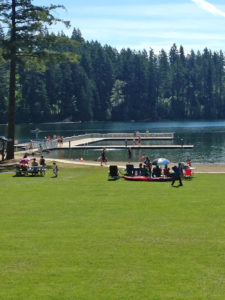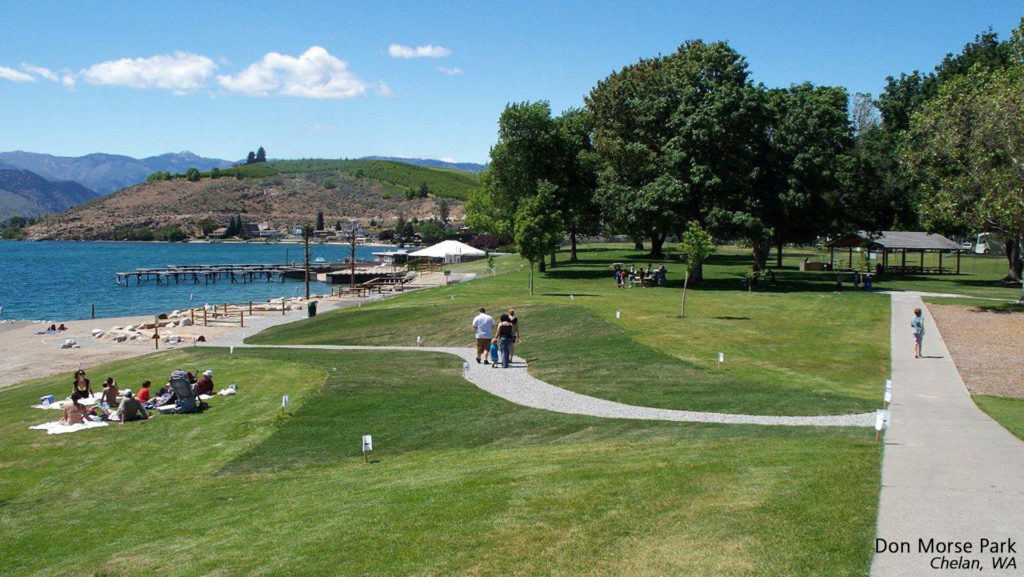Have you ever been out on a dock, a pier, or some other waterfront structure and wondered why it is built the way it is, pointing the direction it does, or why it has certain features?
I’m betting the answer is probably “no” if you haven’t been around or involved in the design of waterfront structures. That cool dock, fun place to play, awesome waterfront pier, or nice place to work on your tan likely had a lot of challenges before becoming the finished product you enjoy today.
One of the great things about my job as part of Reid Middleton’s Waterfront Group is that I get to come to work each day and work on projects that are very unique and present their own set of challenges. When it comes to waterfront structures, there are three main components that need to be considered and incorporated for a project to be successful – the environment; permitting; and, of course, the users.
Component #1 – Environment
While the waterfront may look like a pretty, peaceful place on a calm summer day, there are a surprising number of environmental aspects that need to be considered. The waterfront environment can be harsh, with many potential environmental conditions that can affect a project – things like wind, waves, currents, shoreline erosion, corrosion (especially in salt water), steep slopes, abrasion (due to sand), marine borers, potential damage from driftwood, or even the fact that your entire shoreline could change due to sediment transport. However, through experience and teaming with biologists, geologists, coastal engineers, geotechnical engineers and others, all of these varied environmental conditions can be evaluated and the best long-term solution determined for each individual site.
Component #2 – Permitting
Have you ever built a house or maybe even helped with a new deck? Then you have some insight into the world of permitting, where it seems like you need acceptance from everyone on nearly every little thing before you can actually go ahead and build. And yes, it is the same for waterfront projects, but with even more interested parties to get approval from. There are three levels of permitting that need to be satisfied in order for a design to be approved and before it can be implemented or built. On the Federal level, approval can be required from the Corps of Engineers, National Marine Fisheries, Department of Natural Resources, as well as any native tribes that have an interest in the project. On the State level, approval can be required from Fish and Wildlife and Department of Ecology. On the local level, there are multiple permits by the City or County for projects including Land Use Permit, Shoreline Permit, and ultimately, a Building Permit. The challenging part of permitting a waterfront project is that the majority of the entities that require approval all have their own requirements and desired project elements (that can be different or even opposed to others) and don’t generally coordinate with each other. It is a unique challenge to track the various permits, respond to comments, and coordinate between permitting entities to end up with a project that satisfies everyone (ie – gets successfully permitted) and still meets the use and design requirements of the client (all of course while staying within budget too!).
Component #3 – Users

When you think about users, the first thought that comes to mind is everyone who will get to work, play, or otherwise use the finished product and that is definitely one of the main considerations (that is why we build them in the first place). But, there are other “users” who need to be considered in site selection, design, and ongoing operation. Waterfront design needs to think about things like endangered species (such as salmon, orcas, etc.) as well as maintaining or improving the ecology of the existing waterbody, even down to plants (like eelgrass) and animals (fish, birds, seals, etc.) that call it home. How do we do this? While every project is unique and different, site selection, materials selection, and project footprint are carefully considered. Project elements such as incorporating grating to allow light penetration, using inert materials so the environment is not affected (or even improved in the case of most replacement projects), or additional measures like restoring natural shorelines or planting new eelgrass beds can make the project enjoyable for all users (even those we don’t normally think of).
Through previous project experience, teaming with other qualified professionals and developing good relationships with permitting agencies, governments, and other parties, waterfront projects can be successfully navigated through the three items above and built so that they can have a positive environmental impact as well as being around for us and future generations to enjoy.


